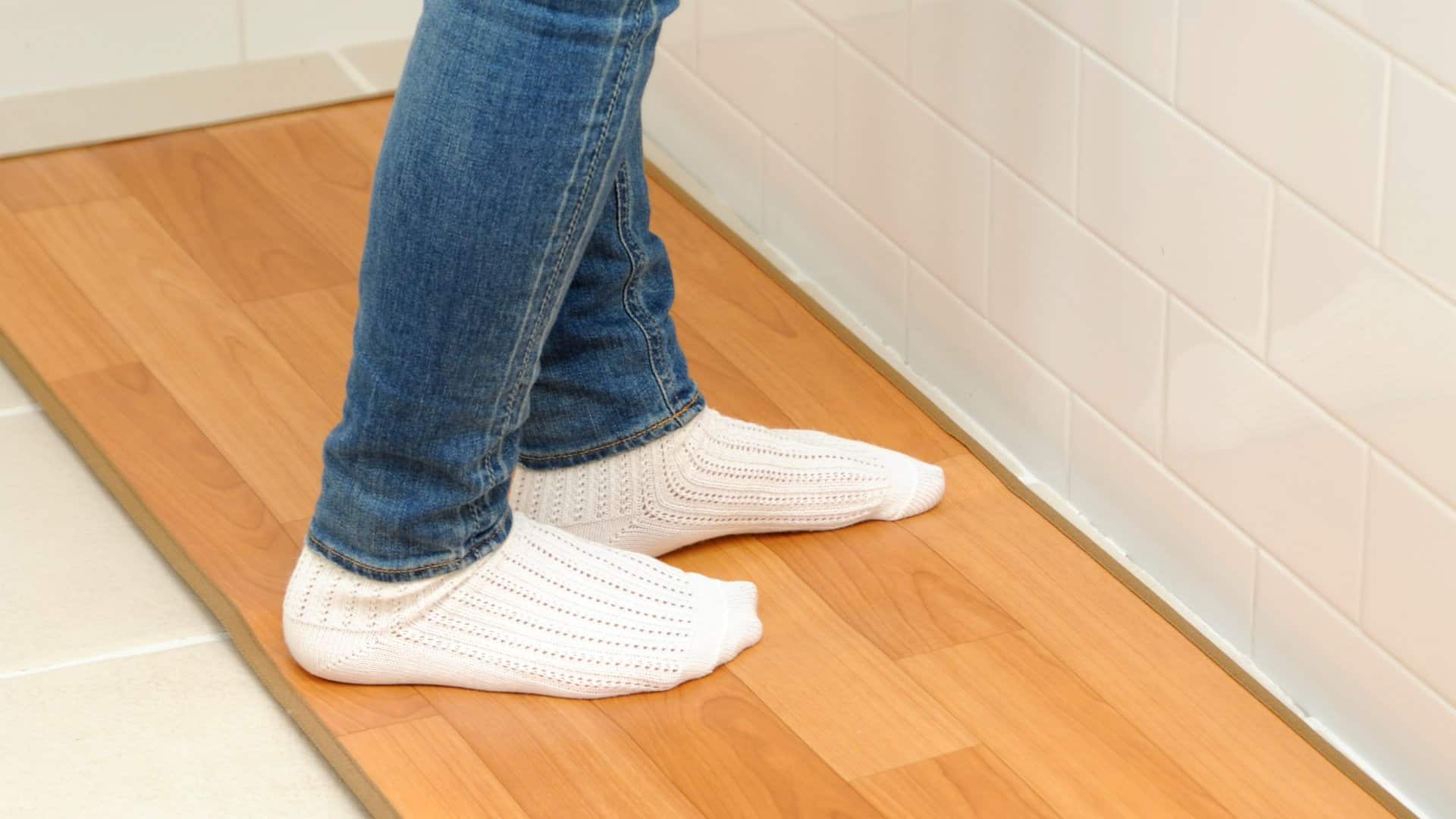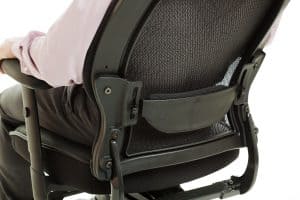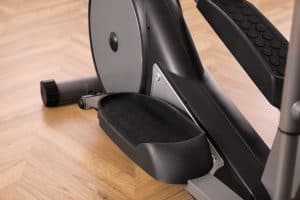Prolonged sitting is associated with many health problems, including obesity, high blood pressure, high cholesterol levels, diabetes, and even some types of cancer. That’s why standing desks have become popular.
However, standing for hours also causes problems, fatigue, and leg pain among the top two. The solution might be to use an anti-fatigue mat while standing. Some even say that anti-fatigue mats are the lumbar support of standing.
In this article, we’ll find out whether anti-fatigue mats are worth the hype. Whether you’re expected to stand on your feet the whole day or want to change the pace from sitting all the time, here’s everything you need to know about this trending product.

What Are Anti-Fatigue Mats?
An “anti-fatigue mat” is a specially designed floor covering placed over a hard-surface floor to protect one’s feet, prevent injuries, and provide a better environment for people who have to stand for extended periods.
Usually, anti-fatigue mats are made of a unique ergonomic pattern and a cushioning underlay. The ergonomic patterns aim to stimulate the feet and encourage micro-movements, while the cushioning insulate the feet from the floor beneath – whether it is too hot, too cold, vibrating, uneven, too hard, and so on.
As the name suggests, the main purpose of anti-fatigue mats is to reduce fatigue, improve blood circulation, and relieve pressure and stress from one’s body when standing for hours in one spot. Think of surgeons, factory workers, cooks, and so on.
However, skeptics are questioning whether a mat can do all those things – improve circulation or reduce fatigue and pain. So, let’s dive into the science behind anti-fatigue mats.
The Science Behind Anti-Fatigue Mats
Theoretical Explanations for the Mechanism of Anti-Fatigue Mats
In the previous section, we mentioned that anti-fatigue mats are made of two essential elements: an ergonomic pattern and a cushioning underlay. And, there’s a reason for this particular design.
The ergonomic pattern promotes subtle or micro-movements of the feet by introducing a small amount of instability. These movements might even be too subtle for us to notice but are helping the body because our muscles are active. And, when the muscles are active, more blood flows to them, improving circulation. Also, moving the muscles encourages a more even distribution of the pressure so that one leg is not bearing more weight than the other.
The cushioning underlay has two functions: absorption and insulation. First, the soft cushion will absorb the pressure and stress on the feet, ankles, and joints caused by the body’s weight. Hard surfaces on floors with no elasticity or flexibility are bad for the feet.
The second function of the cushion is to provide insulation from temperature, vibrations, rough texture, uneven surfaces, and so on.
Empirical Studies Investigating the Effectiveness of Anti-Fatigue Mats
While these are general explanations of the mechanics of anti-fatigue mats, the biology and nitty-gritty details of what exactly happens when we stand on ergonomic, cushioned mats versus the regular floor are still murky.
For instance, one randomized controlled trial published in the International Journal of Occupational Medicine and Environmental Health found that anti-fatigue mats significantly reduced subjective measures of pain when compared to standing on normal, rigid surfaces.
However, the study did not find any difference in the proposed biological factor for lower back pain (bilateral gluteus medius co-activation). In other words, participants did feel less pain when standing on the anti-fatigue mats, even though the researchers did not find biological proof of why or how that happens.
Another study published in the journal Human Factors found similar results. The study investigated only the perceived (subjective) discomfort and pain after 4 hours of standing on four anti-fatigue mats versus a hard surface.
Researchers found that three of the four anti-fatigue mats included in the study significantly reduced the discomfort and pain of participants when compared to the level of discomfort of those standing on a hard surface. However, there were no significant differences between different anti-fatigue mats, and these reports were only subjective measures.
These two studies give hope that investing in an anti-fatigue mat might bring relief from the discomfort and pain caused by prolonged standing. However, more studies are needed to understand how and why anti-fatigue mats work.
Nevertheless, let’s summarize all the associated benefits of using anti-fatigue mats.
Claimed Benefits of Anti-Fatigue Mats
Here are the benefits of using anti-fatigue mats.
Increased Circulation
There’s a common misconception that fatigue happens exclusively due to too much activity. That’s not entirely true, and we might experience fatigue even if our muscles are passive, which has a lot to do with how circulation works.
In physiology, there’s a term called venous pump that describes how contracting muscles press on the veins, forcing blood towards the heart against the flow of gravity. When we stand in one position for too long (no activity), the muscles are relaxed – there’s no pressure on the veins to encourage blood flow – and blood supply to the loaded muscles is reduced.
Reduced blood supply is the onset of fatigue, discomfort, and pain. Anti-fatigue mats have an ergonomic surface that encourages micro-movements. Moving the muscles while standing will cause pressure on the veins and promote blood flow.
Improved Posture
Another benefit of making micro-movements while standing is improved posture. You might not notice, but when standing for too long, we tend to shift the weight on one side. This happens even if we wait in line for ten to twenty minutes.
However, continually moving will encourage your body to stay active, preventing bad posture.
Reduced Discomfort and Pain
All the mechanisms and explanations we provided so far lead to the same result – reducing discomfort and pain from prolonged standing. And as we saw, this can happen by improving our circulation, posture, pressure absorption, and increased activity.
Studies are still trying to find definite proof of the exact biological mechanism responsible for the reduced pain, even though all agree that people report feeling less discomfort and pain when standing on an anti-fatigue mat compared to a hard surface.
Increased Productivity
One natural consequence of feeling less pain and discomfort is increased productivity. When people are comfortable, and pain is not a distraction, they can concentrate better, finish their tasks faster, and be more accurate.
Because of this, anti-fatigue mats are typically used in factories, hospitals, and other institutions where fatigue is a common problem.
Reduced Risk of Injury
Anti-fatigue mats are not designed to reduce the risk of injury, but it’s a great “side effect.”
It works because anti-fatigue mats are non-slippery, which reduces the possibility of slipping, tripping, or falling within the workplace, especially if they cover tiles or another hard and smooth floor.
Disadvantages of Anti-Fatigue Mats
Until now, we mainly discussed the benefits of using an anti-fatigue mat. However, there are drawbacks that we need to mention to be fully objective. Most drawbacks are related to the quality of the anti-fatigue mats.
Cushion Might Lose Its Shape
The most common drawback of anti-fatigue mats is the fast wear and tear of the supportive cushion. It’s a big problem for all brands, but mostly cheap, foam-based mats.
Standing on the mat might distort the cushion, making it unresponsive to movements. As you might guess, this would make the mat pretty much worthless as it won’t be able to stimulate micro-movements or absorb the pressure from the body weight.
Anti-fatigue mats should have a cushion that immediately returns to shape when the foot is lifted away – even if we make a very slight micro-movement. That’s the whole purpose of the product.
Vinyl-topped mats are considered more durable and resistant, unlike foam-based mats, but they’re more expensive and usually designed for large, heavy-duty areas.
Its Effectiveness Is a Balancing Act
A mat that’s just right in terms of softness and (in)stability is hard to find. Even slight imbalances in these two factors and the mat might be ineffective at best or cause more discomfort and pain at worse.
Anti-fatigue mats must be soft enough to absorb the pressure created by standing. But if they’re too soft, they might force the body to work too hard to stabilize itself, leading to even more tension and discomfort.
Also, mats need to be very slightly unstable to promote the micro-movements we’ve talked about so much. However, if they’re too unstable, they might be dangerous and lead to issues with balance.
Some Mats Are Not Fixed On the Floor
Finally, removable mats for one individual – ones you can place under your desk or in your kitchen – might have some unexpected problems, such as being too hard to clean or slippery.
The latter contradicts what we said earlier about anti-fatigue mats preventing injuries. And, that’s true; if they’re not attached to the floor or move easily, they might become a risk instead of protection. This is a problem unique to removable, small anti-fatigue mats, so if you’re using such, be careful.
Another drawback is that removable and small anti-fatigue mats might lead to dust building beneath them. This means that you need to clean beneath them regularly because dust builds up beneath them, making them more slippery.
Verdict: Are Anti-Fatigue Mats Worth It?
So, are anti-fatigue mats worth it?
Evidence supports the claim that anti-fatigue mats reduce discomfort and pain from prolonged standing. But, there’s a caveat. Those findings are all based on subjective measures.
People report feeling less discomfort and pain when using these mats, but maybe it’s the placebo effect.
This is why we need more studies that investigate the biological mechanisms of how anti-fatigue mats work.
For now, based on available data, anti-fatigue mats sound promising.
If you’re about to invest in anti-fatigue mats, consider the material – vinyl tops are more durable and resilient than foam-based mats. Make sure the mat is firmly attached to the floor – if it moves easily, it might slip and lead to injuries. Finally, try out the mat before buying – it should be soft, but not too soft, and you should feel stable while on it.





